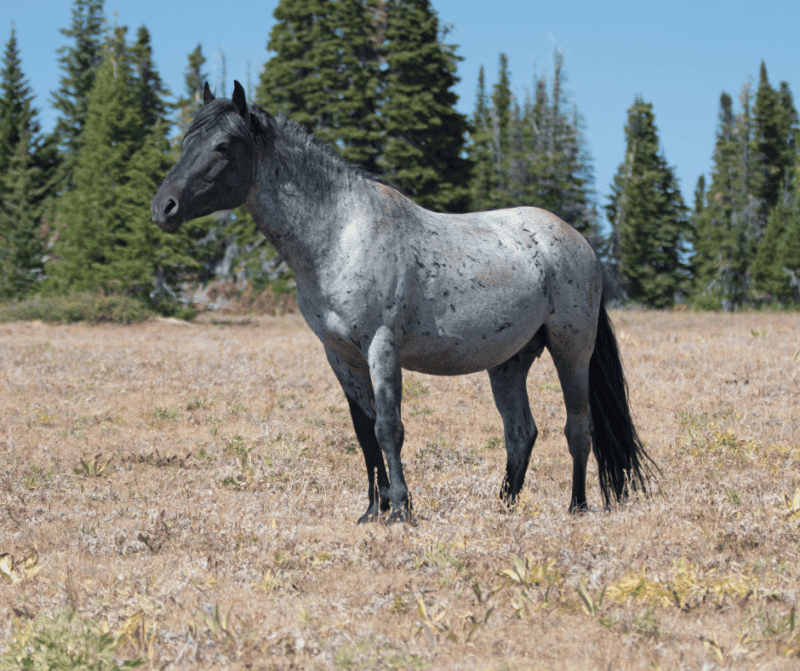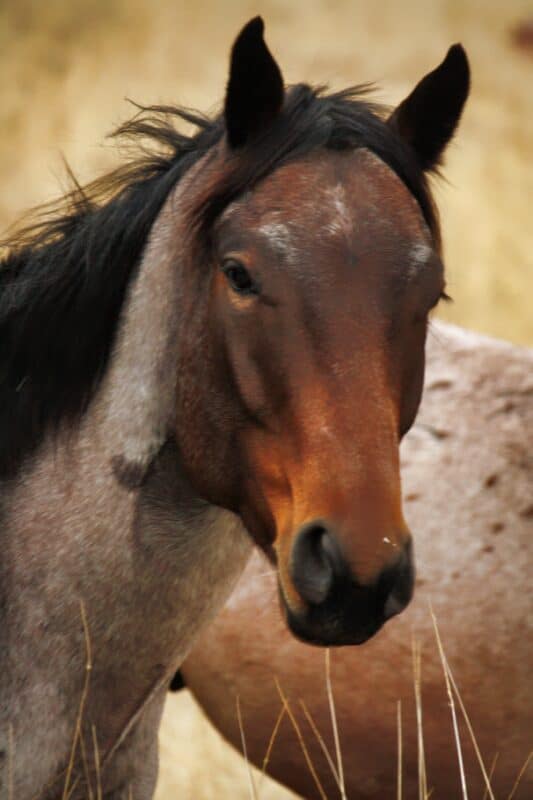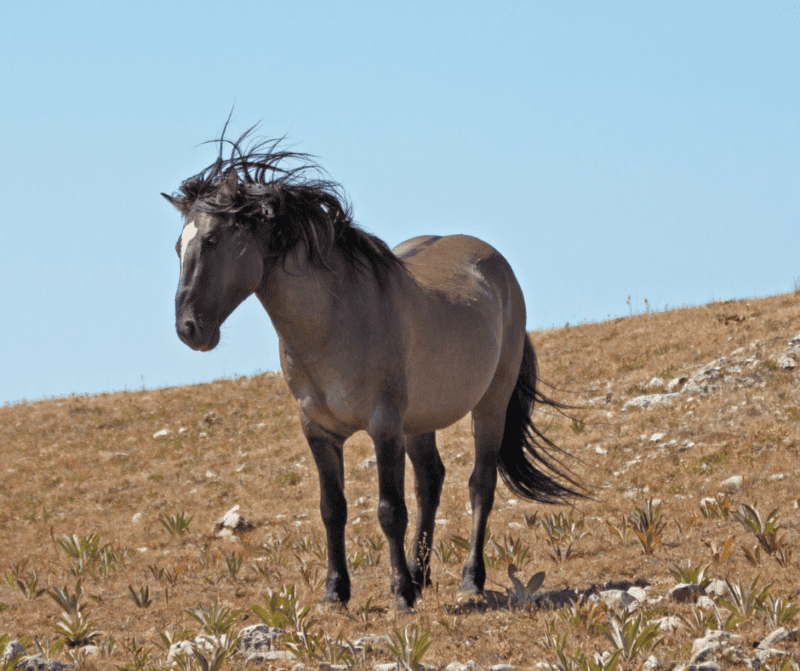Let’s Celebrate National Day of the Horse!

In 2004, Congress designated December 13th as National Day of the Horse, and we’ve celebrated each year since. They established the day to encourage U.S. citizens to be mindful of the contribution of horses to the economy, history, and character of the United States.
“Horses have been inextricably linked to U.S. history and culture since its beginnings,” said AHC President Julie Broadway. “They have contributed greatly to the advancement of our society from tilling the fields to grow crops for early settlers, rounding up livestock on ranches, and contributing $9.2 billion to the U.S. economy.”
In honor of this holiday, I thought it would be fun to share the breed of horses in the Seven Tine Ranch Romance series.
In Captured Secrets, Sydney Hardy raises blue roan horses.

Blue roan horses have a color pattern with a relatively even mixture of black and white hair that creates a blue appearance. Their head and lower legs are typically darker and have little or no white. Blue roan horses are present in many equine breeds.
Many horse owners like horses with flashy coloring, and blue roan horses can be the most striking of equine coat patterns.
In Renewed Hope, Chad Davis Works with a bay roan.

Most of Sydney’s horses are American Quarter Horses. In fact, all of the horses in the Seven Tine series are Quarter horses because they make some of the best ranch horses.
The American Quarter Horse evolved from numerous horse breeds, including Thoroughbreds, Percherons, Belgians, and wild mustangs in the western United States. They were originally bred for racing short distances in the early colonies over 200 years ago.
Today’s Quarter horse is a versatile and athletic breed that participates in many equine events. The American Quarter Horse Association has the largest number of registered horses in the world.
Another beautiful horse is Rita Runninghorse’s Opal. She shows up in Broken Bondage.

Opal is a smokey grulla Quarter horse.
Click the button to see the horse I used as inspiration for Opal
The word ‘gulla’ has Spanish origins. How it became associated with a horse coat color is a bit of a mystery, as the word means ‘crane.’
Grulla horses are known for their distinct colors and beautiful markings.
Although there may be many horses that will mimic the colors of a Grulla horse, it is not a true Grulla unless it carries both the dun and black genes.
There are many shades of Grulla but all of them will have some tinge or hint of black.
They can come in chocolate brown, champagne, painted, silver dappled, blue, light gray, or even shades that are nearly entirely black or white.
For a horse to be considered a Grulla horse, it must have these distinctive markings:
- A head that is distinctly darker in shade compared to the rest of the horse’s body
- Ears with dark tips
- Legs that are dark in color – usually with black markings or those that are a dark shade of brown
- A dorsal stripe. This is a dark stripe which runs along the back of the horse all the way to the tail
There are also minor varied markings that may accompany these major markings in a Grulla horse, such as:
- The presence of stripes along the legs
- Dark mottling patterns found on the legs and shoulders of the horse
- Dark rings surrounding the eyes
- Shoulder stripes, and/or stripes on areas such as the forehead, neck, and back.
- Guard hairs in the mane or tail that are colored white or cream
Since a Grulla horse is actually a black horse, expect a dark mane and a dark tail.
I have owned Paint horses, Quarter horses, and Arabian, and a half-Morgan-half-Quarter horse. My favorite is pictured above. Buck is a black-and-white Tobiano Paint horse. He’s a gem now at the age of 23 and runs the ranch!
I hope you enjoyed learning about the horses in the Seven Tine Ranch Romance Trilogy.

What’s your favorite breed and color of horses? And, yes, ponies and minis count!!
Drop your answer in the comments.
